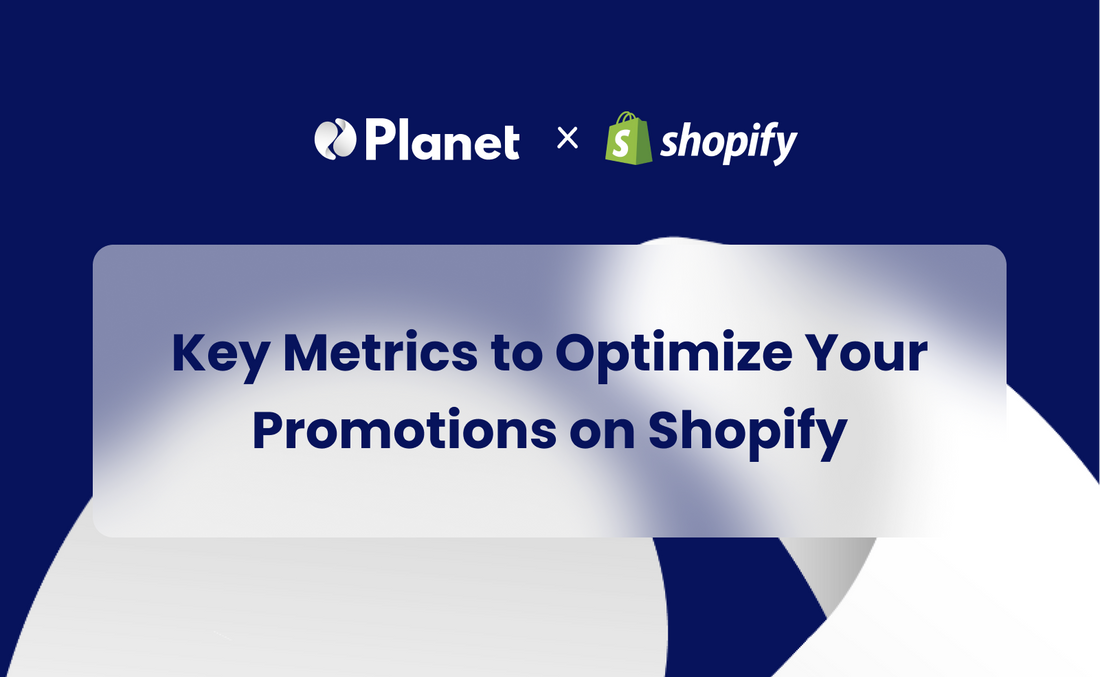Running promotions without measuring is like driving without looking at the road. No matter how many discounts or incentives you launch, if you don’t know what works and what doesn’t, you risk losing margin and opportunities.
In this article, we explain which metrics you should analyze to evaluate your promotional campaigns and how to interpret them correctly.
If you want to understand how to read this data and make the most of the analysis tools, check out our Guide on how the analytics table works.
Ready to measure what matters and optimize your results?
Get started with Planet and discover which promotions truly convert, no hassle.

1. Percentage of promoted orders
What it measures: What proportion of your total orders include an active promotion.
Why it matters: It helps you understand the real weight of promotions in your sales.
- A low percentage may signal that promotions are not being seen or understood, perhaps visibility is low (hidden in the cart or unclear messaging) or they’re not attractive enough.
- A high percentage could indicate that customers depend too much on discounts, potentially eroding your margins. In this case, you should analyze whether you are offering promotions indiscriminately and consider more precise segmentation.
2. Average order value (AOV) for promoted vs. general orders
What it measures: Compares the average value of orders that used a promotion with the average of all orders (promoted or not).
Why it matters: The goal of a well-designed promotion is not simply to attract orders, but to increase their value.
A key success indicator is that the AOV of promoted orders is significantly higher than the general AOV, showing that incentives (like volume discounts, upsells, or free gifts) are encouraging customers to spend more.

3. Impact on Specific Products
What it measures: How each promotion affects the turnover of specific products, helping you assess whether campaigns are helping you sell what matters most.
Why it matters: Not all promotions serve the same purpose. Analyzing product-level impact enables you to identify which promotions achieve their objectives and which do not gain traction.
4. Real profitability of the promotion
Selling more doesn’t always mean earning more. An effective promotion should not only drive sales and increase average order value, but it must do so without hurting your margins.
Why it matters: It’s easy to fall into the trap of measuring success solely by the number of sales or promotional orders. But if those sales significantly reduce your unit or overall margin, they can undermine your store’s profitability.
How to interpret Planet's analytics table
If you’re already using Planet to manage your promotions, one of the most useful tools is the analytics table. It provides a clear understanding of which campaigns are performing well, their impact on customer behavior, and the extent to which they truly contribute to your sales.

These metrics allow you to track Planet’s performance from the moment it was installed and month by month:
- [Current Month] Planet Revenue: Total revenue generated through Planet during the current month. Calculated by adding up the final price of products that received a Planet discount.
- Total Planet Orders: The total number of orders that included products with Planet discounts since installation.
- Total Planet Revenue: Cumulative revenue generated through Planet since installation.
- Total Store Orders: The total number of orders placed in the store since Planet was installed.
- Total Store Revenue: Total store revenue, including all orders, since installation.
With this data, Planet gives you a clear and accurate view of the real impact of your promotions over time. This helps you make informed decisions to optimize your campaigns and maximize your results.
Ready to measure, optimize, and sell smarter?
Get started today with Planet and turn every promotion into a profitable decision.

